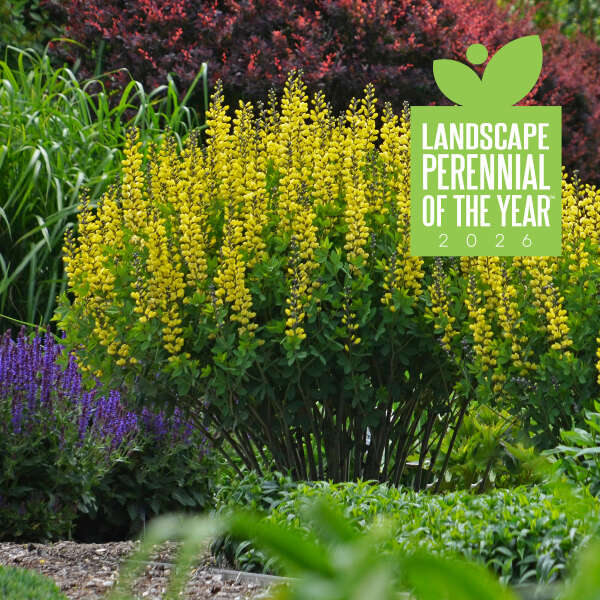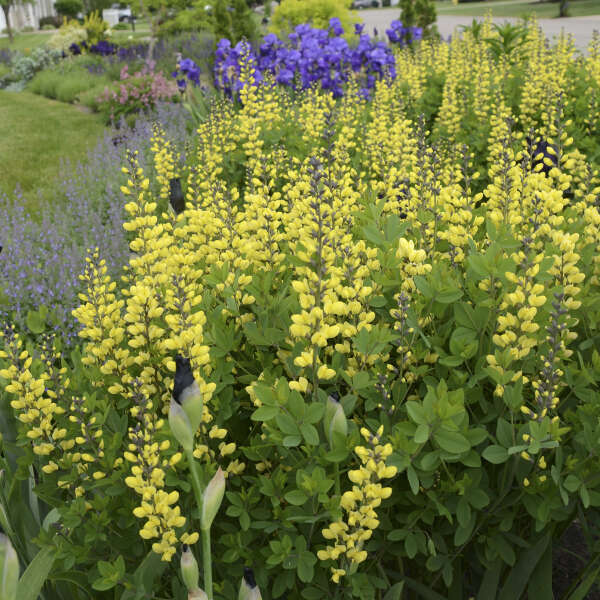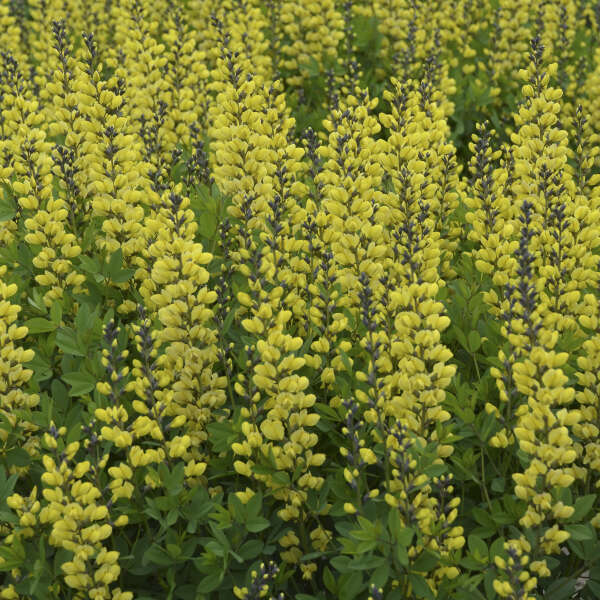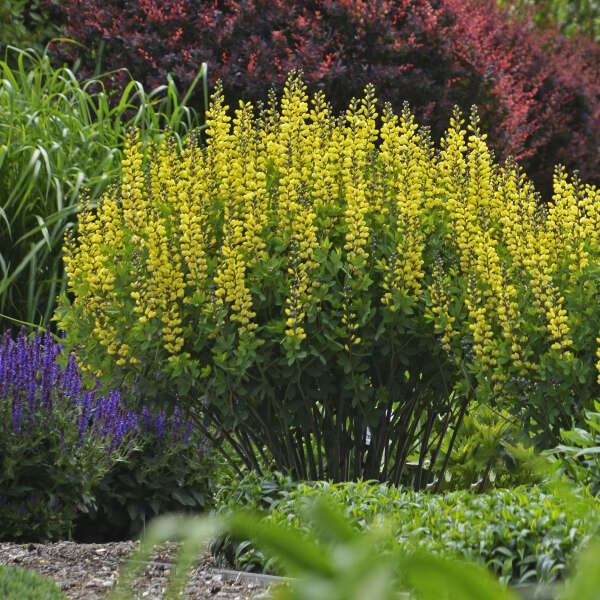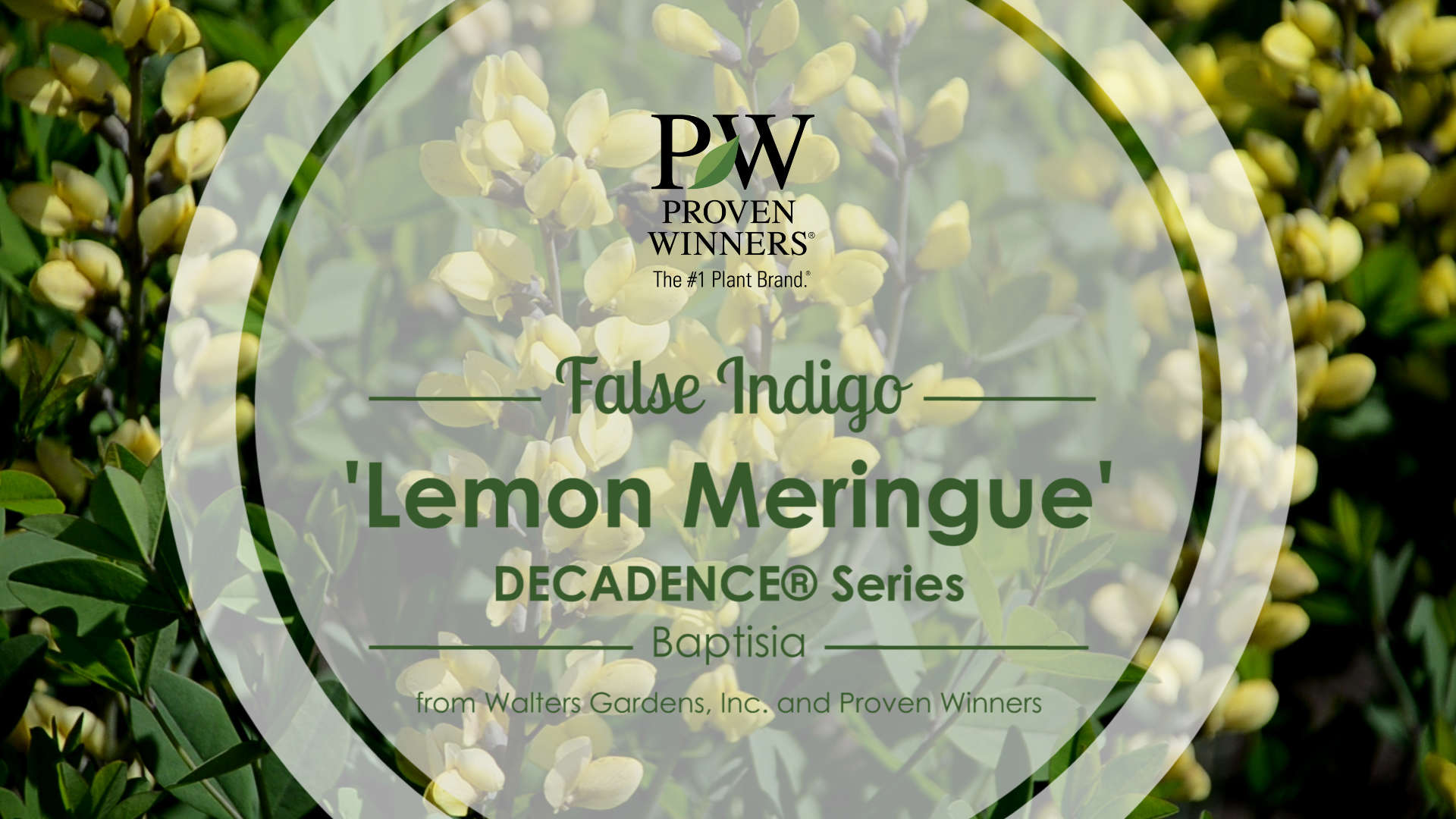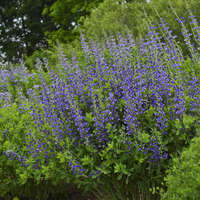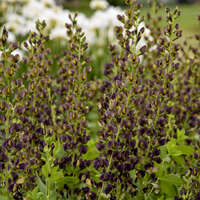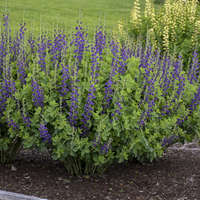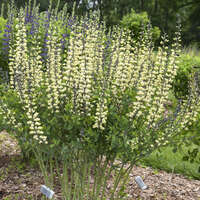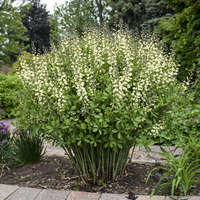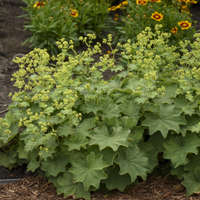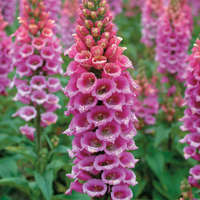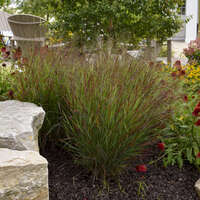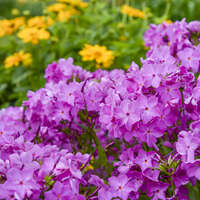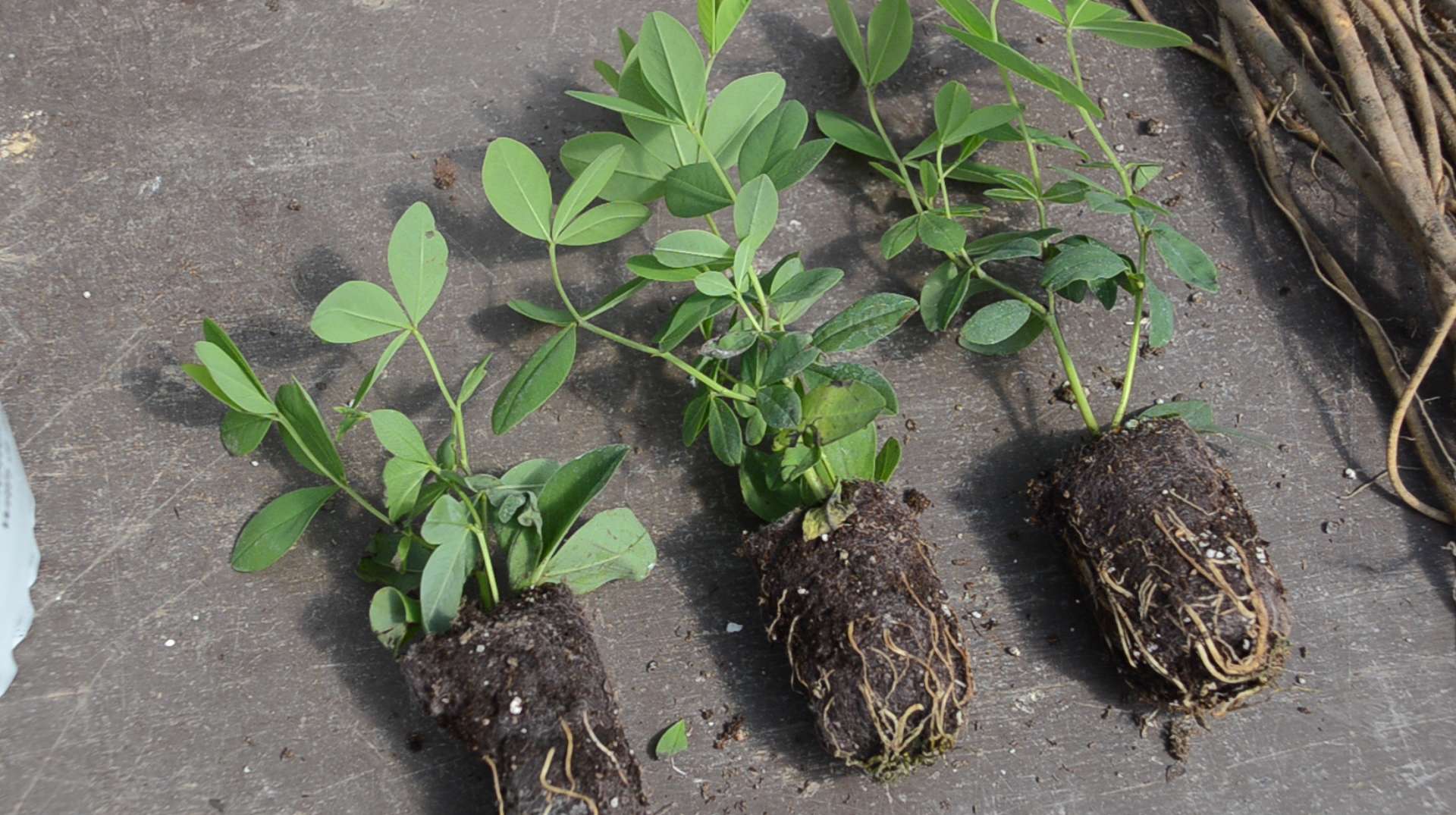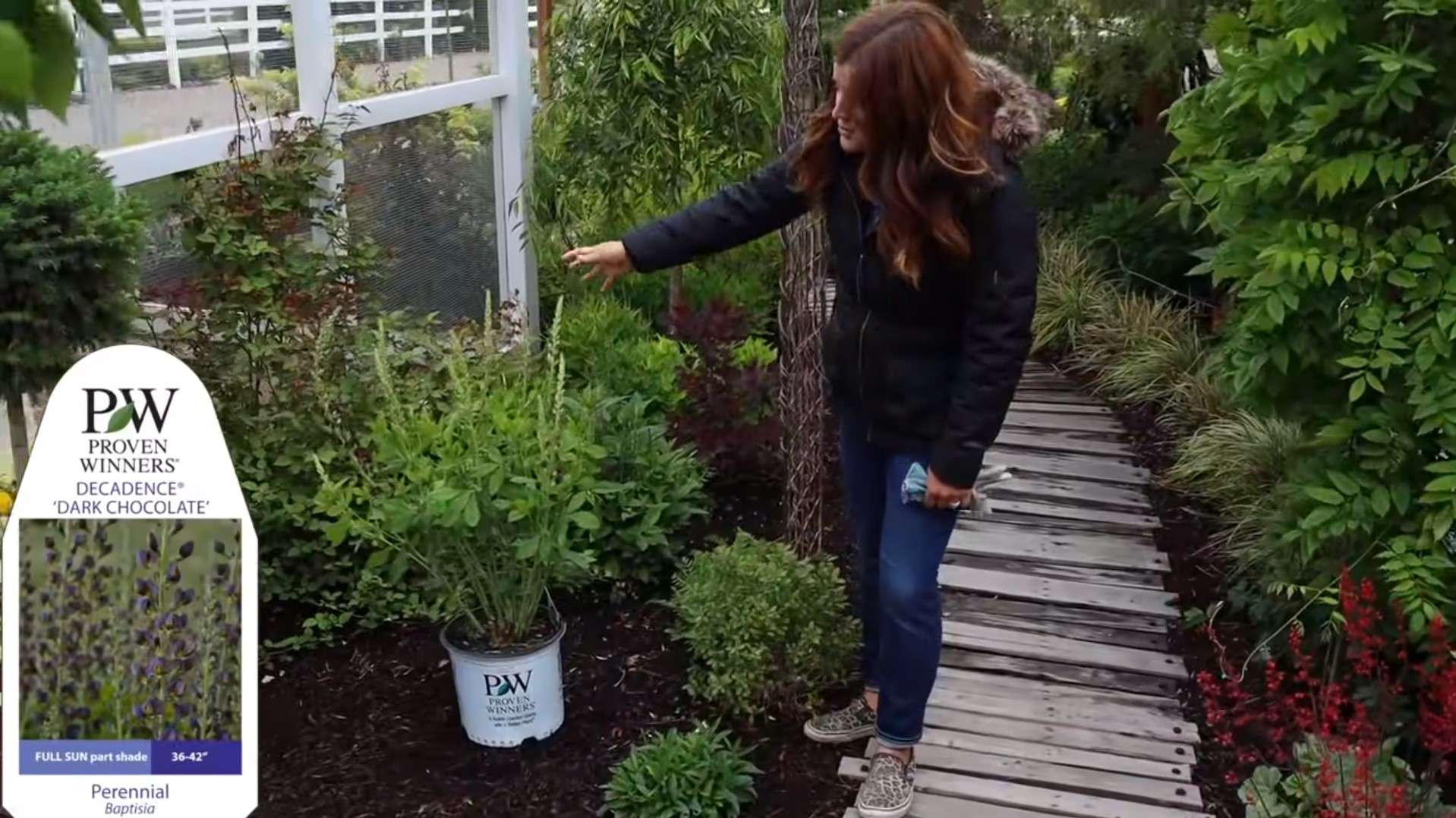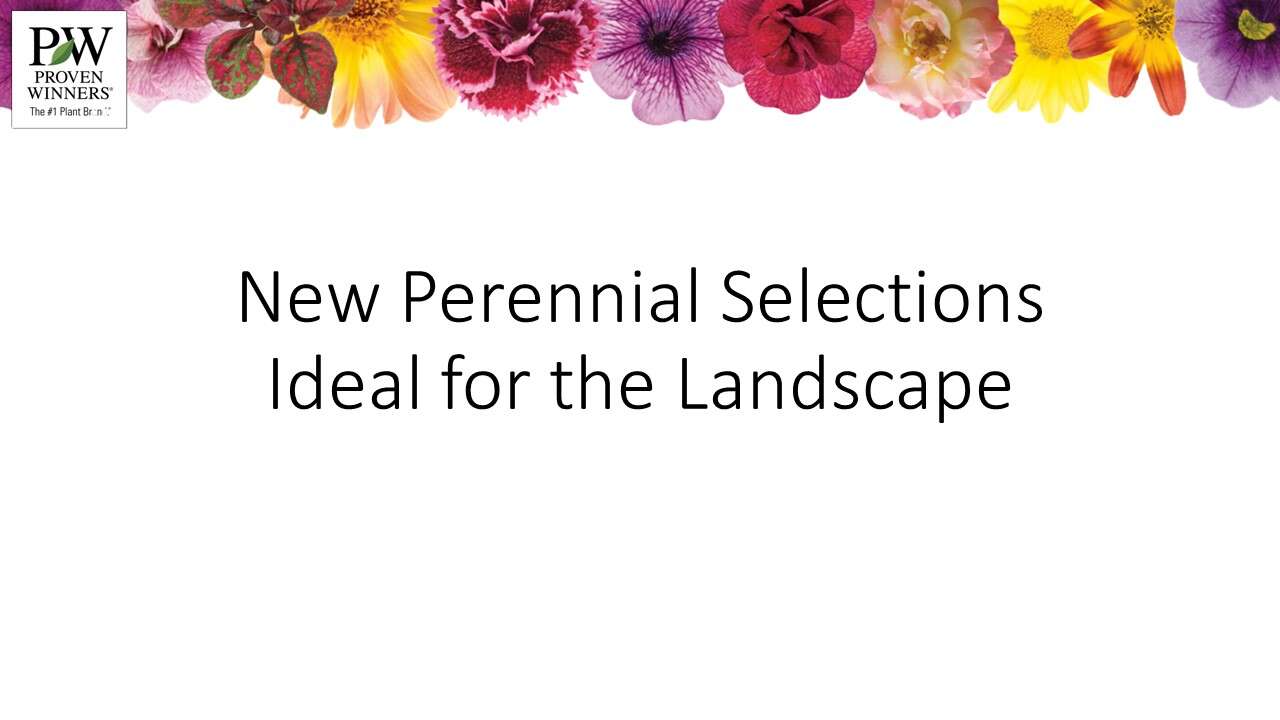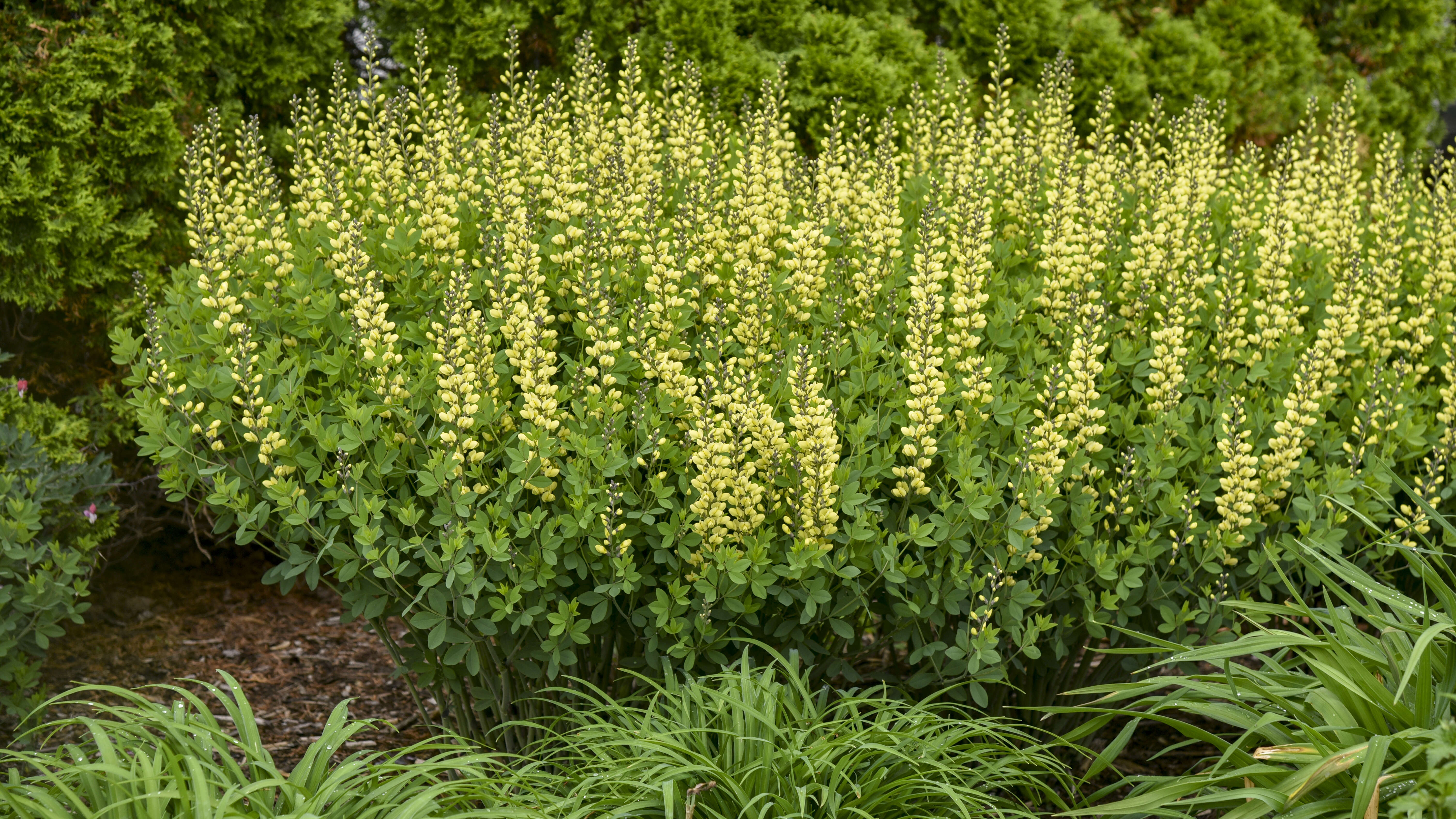Baptisia 'Lemon Meringue' PP24280 CPBR5097
DECADENCE® Series



Common Name: False Indigo
2026 Proven Winners National Landscape Perennial of the Year®
You’ll be impressed with the excellent vigor of this yellow flowered selection. It forms an upright, vase-shaped mound of attractive blue-green foliage topped with long, charcoal stems which carry the lemon yellow flowers in late spring to early summer. The contrast of dark stems with light flowers really pops in the landscape, delivering an excellent floral display. Ornamental seed pods extend the season of interest into fall.
Baptisia is easy to grow and will thrive with little maintenance. There are many potential applications in the landscape including meadow plantings, as a backdrop in borders, or as a specimen. Plants are very long-lived once established.
The roots of the DECADENCE® series run deep. What started as a fun botanizing trip in the lower Midwest with a fellow horticultarist blossomed into a complex hybridizing project for breeder Hans Hansen. Hans has made countless crosses with the many native Baptisia species he has collected across Texas and Oklahoma. These crosses have resulted in an array of seedlings with unique flower colors and plant habits. Only the very best have made it into the new DECADENCE® Series, which includes varieties selected for their desirable flower colors and shorter, more compact habit.
The DECADENCE® trademark is owned by Walters Gardens, Inc.
